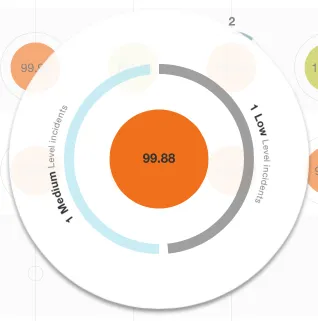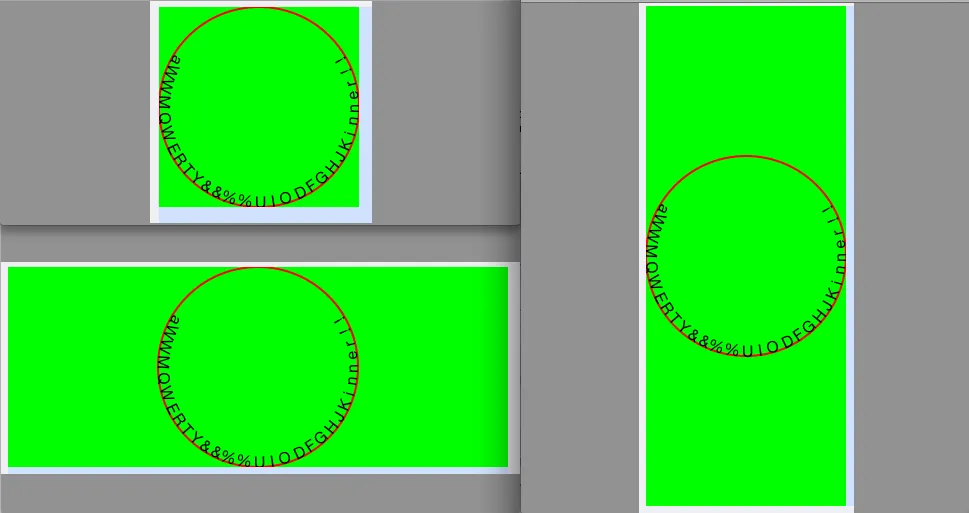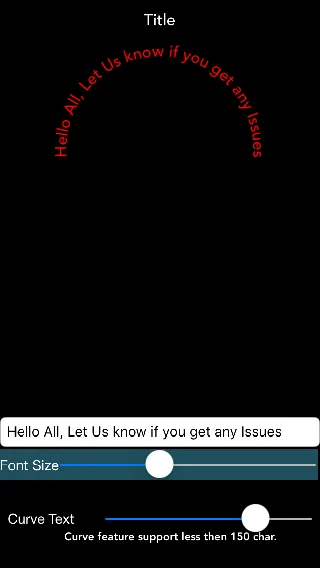我正在构建一款应用程序,画了两个圆。一个比另一个稍大。 我想在这些线之间弯曲文本,为我正在构建的循环菜单服务。
我阅读了大部分关于弯曲文本的内容,您需要将文本拆分为字符,并考虑正确的角度来绘制每个字符(通过旋转您正在绘制的上下文)。
我只是无法理解如何获得我的字符的正确角度和位置。
我包含了一个截图,展示目前菜单的样子。只有我添加的文本是从UIImageView中加载的图像。
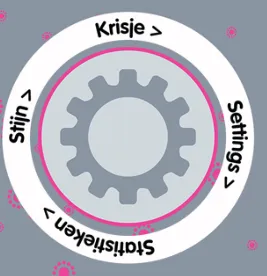
我希望有人能给我一些起点,告诉我如何在特定位置绘制白色圆圈中的文本。
编辑: 好的,目前我处于这个阶段:
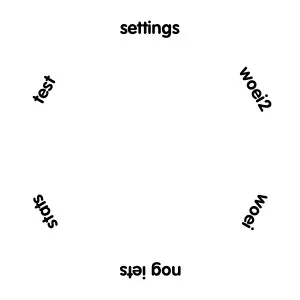
我使用以下代码来完成:
- (UIImage*) createMenuRingWithFrame:(CGRect)frame
{
CGRect imageSize = CGRectMake(0,0,300,300);
float perSectionDegrees = 360 / [sections count];
float totalRotation = 90;
char* fontName = (char*)[self.menuItemsFont.fontName cStringUsingEncoding:NSASCIIStringEncoding];
CGColorSpaceRef colorSpace = CGColorSpaceCreateDeviceRGB();
CGContextRef context = CGBitmapContextCreate(NULL, imageSize.size.width, imageSize.size.height, 8, 4 * imageSize.size.width, colorSpace, kCGImageAlphaPremultipliedFirst);
CGContextSetTextMatrix(context, CGAffineTransformIdentity);
CGContextSelectFont(context, fontName, 18, kCGEncodingMacRoman);
CGContextSetRGBFillColor(context, 0, 0, 0, 1);
CGPoint centerPoint = CGPointMake(imageSize.size.width / 2, imageSize.size.height / 2);
double radius = (frame.size.width / 2);
CGContextStrokeEllipseInRect(context, CGRectMake(centerPoint.x - (frame.size.width / 2), centerPoint.y - (frame.size.height / 2), frame.size.width, frame.size.height));
for (int index = 0; index < [sections count]; index++)
{
NSString* menuItemText = [sections objectAtIndex:index];
CGSize textSize = [menuItemText sizeWithFont:self.menuItemsFont];
char* menuItemTextChar = (char*)[menuItemText cStringUsingEncoding:NSASCIIStringEncoding];
float x = centerPoint.x + radius * cos(degreesToRadians(totalRotation));
float y = centerPoint.y + radius * sin(degreesToRadians(totalRotation));
CGContextSaveGState(context);
CGContextTranslateCTM(context, x, y);
CGContextRotateCTM(context, degreesToRadians(totalRotation - 90));
CGContextShowTextAtPoint(context, 0 - (textSize.width / 2), 0 - (textSize.height / 2), menuItemTextChar, strlen(menuItemTextChar));
CGContextRestoreGState(context);
totalRotation += perSectionDegrees;
}
CGImageRef contextImage = CGBitmapContextCreateImage(context);
CGContextRelease(context);
CGColorSpaceRelease(colorSpace);
return [UIImage imageWithCGImage:contextImage];
}
这些是我在其中使用的变量:
NSArray* sections = [[NSArray alloc] initWithObjects:@"settings", @"test", @"stats", @"nog iets", @"woei", @"woei2", nil];
self.menuItemsFont = [UIFont fontWithName:@"VAGRounded-Bold" size:18];
这些单词的旋转似乎是正确的,位置也对。现在我需要想办法确定字母(以及它们的坐标)应该旋转到哪个角度。我可能需要一些帮助。
编辑:已修复!请查看以下代码!
- (void) drawStringAtContext:(CGContextRef) context string:(NSString*) text atAngle:(float) angle withRadius:(float) radius
{
CGSize textSize = [text sizeWithFont:self.menuItemsFont];
float perimeter = 2 * M_PI * radius;
float textAngle = textSize.width / perimeter * 2 * M_PI;
angle += textAngle / 2;
for (int index = 0; index < [text length]; index++)
{
NSRange range = {index, 1};
NSString* letter = [text substringWithRange:range];
char* c = (char*)[letter cStringUsingEncoding:NSASCIIStringEncoding];
CGSize charSize = [letter sizeWithFont:self.menuItemsFont];
NSLog(@"Char %@ with size: %f x %f", letter, charSize.width, charSize.height);
float x = radius * cos(angle);
float y = radius * sin(angle);
float letterAngle = (charSize.width / perimeter * -2 * M_PI);
CGContextSaveGState(context);
CGContextTranslateCTM(context, x, y);
CGContextRotateCTM(context, (angle - 0.5 * M_PI));
CGContextShowTextAtPoint(context, 0, 0, c, strlen(c));
CGContextRestoreGState(context);
angle += letterAngle;
}
}
- (UIImage*) createMenuRingWithFrame:(CGRect)frame
{
CGPoint centerPoint = CGPointMake(frame.size.width / 2, frame.size.height / 2);
char* fontName = (char*)[self.menuItemsFont.fontName cStringUsingEncoding:NSASCIIStringEncoding];
CGFloat* ringColorComponents = (float*)CGColorGetComponents(ringColor.CGColor);
CGFloat* textColorComponents = (float*)CGColorGetComponents(textColor.CGColor);
CGColorSpaceRef colorSpace = CGColorSpaceCreateDeviceRGB();
CGContextRef context = CGBitmapContextCreate(NULL, frame.size.width, frame.size.height, 8, 4 * frame.size.width, colorSpace, kCGImageAlphaPremultipliedFirst);
CGContextSetTextMatrix(context, CGAffineTransformIdentity);
CGContextSelectFont(context, fontName, 18, kCGEncodingMacRoman);
CGContextSetRGBStrokeColor(context, ringColorComponents[0], ringColorComponents[1], ringColorComponents[2], ringAlpha);
CGContextSetLineWidth(context, ringWidth);
CGContextStrokeEllipseInRect(context, CGRectMake(ringWidth, ringWidth, frame.size.width - (ringWidth * 2), frame.size.height - (ringWidth * 2)));
CGContextSetRGBFillColor(context, textColorComponents[0], textColorComponents[1], textColorComponents[2], textAlpha);
CGContextSaveGState(context);
CGContextTranslateCTM(context, centerPoint.x, centerPoint.y);
float angleStep = 2 * M_PI / [sections count];
float angle = degreesToRadians(90);
textRadius = textRadius - 12;
for (NSString* text in sections)
{
[self drawStringAtContext:context string:text atAngle:angle withRadius:textRadius];
angle -= angleStep;
}
CGContextRestoreGState(context);
CGImageRef contextImage = CGBitmapContextCreateImage(context);
CGContextRelease(context);
CGColorSpaceRelease(colorSpace);
[self saveImage:[UIImage imageWithCGImage:contextImage] withName:@"test.png"];
return [UIImage imageWithCGImage:contextImage];
}
